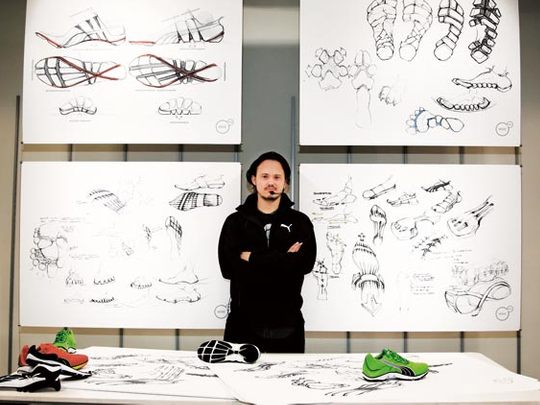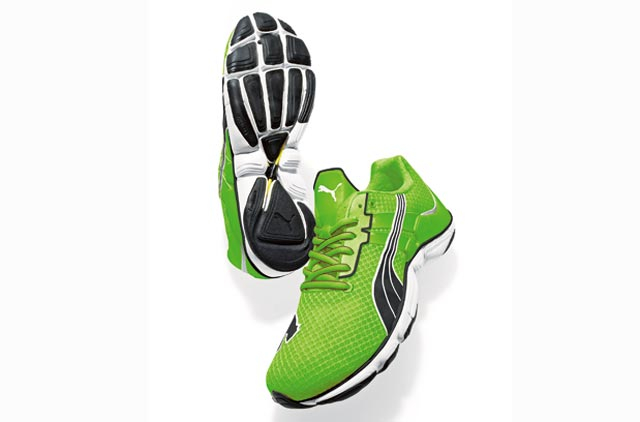
If we were to tell you that a cat’s foot opens and closes, expands and contracts as it lands and pushes off again and that’s what really gives it its natural cushioning, would you do anything meaningful with that bit of Animal Planet trivia? Well, if you were Ray Horacek you would.
The American-born head of design for Puma Footwear Japan has created a running shoe that incorporates this mechanism. Central to the trainer is the mobium band, a piece of elastic string in a figure-of-eight configuration that enhances the foot’s natural spring; a windlass chassis, which mimics the windlass effect of a foot’s expansion and contraction as it moves; and expansion pods, cushioning on the outsoles of the shoe that provide protection and flexibility. Here are excerpts from our chat:
The world of running shoes sees a lot of innovations every year, with brands introducing new technologies, each claiming to be better than existing designs. As a designer, how difficult is it to keep up with this?
Of course we always have our eyes on new running products that are being released, but most of it usually falls into one of three categories. The first category includes small changes to existing approaches that were once revolutionary; the second category includes innovations that do not have solid research behind them or clear benefits to the user; and the third category involves new ideas – the game-changers that successfully fill a need that was there but had not been addressed yet. This is the smallest category by far and, in my opinion, the only one that really matters.
Do you have a particular design philosophy? How did that translate to the creation of the Mobium Elite shoe?
Nature is the source of everything. I have come to accept that nature has discovered the most effective design solutions to a number of issues. The first element of my approach is to take design solutions existing in nature and apply them to the problem at hand. The second is a design process that is based on nature’s discovery process and relies heavily on serendipity – discovering solutions through trial and error rather than setting out from the beginning with a finished design in my head.
Your design studio is in Tokyo. How are you influenced by the city?
Tokyo has an immeasurable influence on my designs, artwork and my life. Japan is a land of extreme contrasts: ancient craft versus futuristic technology, traditional ideals versus ultra-fast adoption of modern approaches, deep respect for nature versus passion for anything and everything machine-made. There is a balance here that sits at the centre point between all of these contrasts, considering all of them at once equally – both consciously and unconsciously. I base a lot of my thinking on this extreme but balanced approach.
Tell us about the creation of the Mobium Elite. How long did it take you to design the shoe?
The original research into the physiology of the puma cat and other big cats began almost three years ago, yet this project was officially kicked off about two and a half years back. There were several different designs and a lot of prototype trials during the process. The final product started to take shape a just less than a year ago.
What are some of the trends you foresee in men’s running shoes?
Now is a very exciting time in the world of running footwear. The natural running movement has blown the top off generally accepted traditional notions about running form and shoe construction, which began in the Seventies.
For sure, brands will continue releasing new minimalist shoes that are great for specific runners who work to strengthen their feet for near-barefoot running. However, I think the most exciting and enduring innovations will be those that help consumers run more naturally without going to the extreme of taking away most of the cushioning and support.













